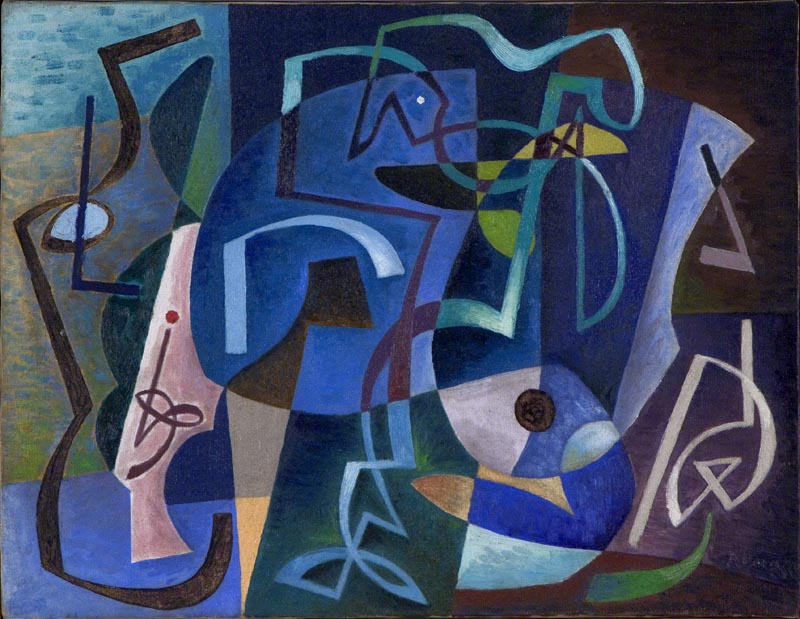
Untitled #10, 1936
Oil on canvas, 191/4 x 25 in.
ABOUT THE ART
This abstract painting creates a space fractured into several colorful, flattened planes, like puzzle pieces that project and recede. Ribbon-like shapes weave through the composition changing color as they move. Small circles punctuate the rhythmic pattern.
This small painting was created as part of the U.S. government’s Works Progress Administration programs for visual artists. WPA programs sought to help unemployed people during the Great Depression of the 1930s and included providing federal money to fund the work of artists across the country. The art of the WPA was usually realistic in style. Corazzo was one of the WPA artists who continued to paint in a completely abstract style during the 1930s.
ABOUT THE ARTIST
Alexander Corazzo was born in France and came to Minnesota in the early 1930s. Trained both in music and civil engineering, he studied painting with Cameron Booth (whose artwork also is in this packet). Corazzo was interested in geometric images and fascinated by abstract art. He painted in this style through the early 1940s. Like fellow artist Stuart Davis, Corazzo worked to create an ordered, structured reality in and through his painting. As Davis put it, “Abstract art is not just a method, a technique, or a style, but it is a point of view, an attitude toward reality.”
Corazzo later moved to Chicago and studied architecture at what was called the New Bauhaus led by Mies Van Der Rohe. By the outbreak of World War II in the 1940s, Corazzo had ended his work in abstract painting to turn fully to a career as an architect.
Vocabulary
Abstract – a style of art that does not directly mimic the appearance of objects from the natural world, hut instead is composed of simplified shapes, forms, or color to express ideas, experience, or emotion.
Architect-a person who designs buildings and other spaces where people live and work.
Bauhaus-a German style of architecture begun in 1918 that stressed modern ideas about technology, used simple geometric forms, and celebrated the future. Bauhaus translated in to English means “built house.” World War II forced leading German architects to escape to Chicago to continue their work, founding the New Bauhaus in the United States.